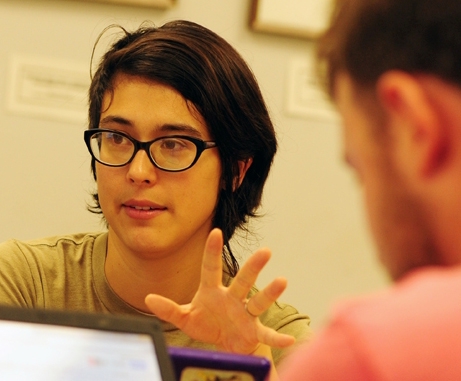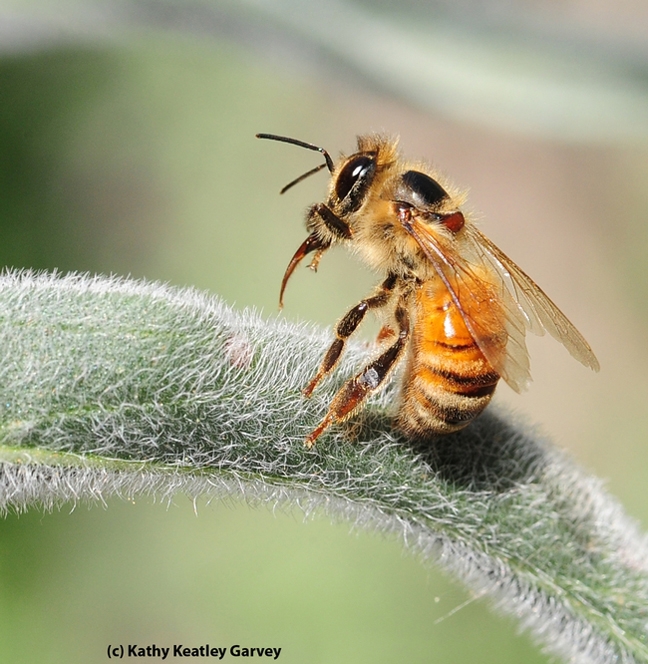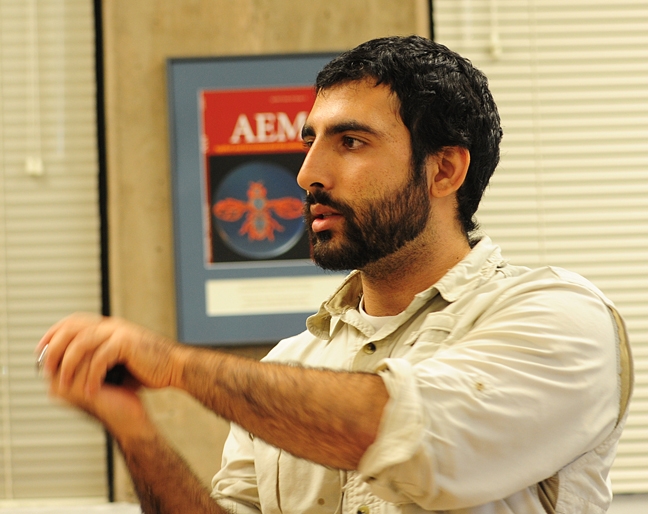
It's a 14-letter word but many people consider it a four-letter word.
Wikipedia defines it as a "a class of neuro-active insecticides chemically similar to nicotine...In the late 2000s some neonicotinoids came under increasing scrutiny over their environmental impacts. The use of neonicotinoids was linked in a range of studies to adverse ecological effects, including honey-bee colony collapse disorder (CCD) and loss of birds due to a reduction in insect populations. Several countries restricted or banned the use of certain neonicotinoids."
"In the U.S., neonicotinoids are currently used on about 95 percent of corn and canola crops, the majority of cotton, sorghum, and sugar beets, and about half of all soybeans," according to Wikipedia. "They are also used on the vast majority of fruit and vegetable crops, including apples, cherries, peaches, oranges, berries, leafy greens, tomatoes, and potatoes. Neonicotinoids are also applied to cereal grains, rice, nuts, and wine grapes. Imidacloprid is effective against sucking insects, some chewing insects, soil insects and is also used to control fleas on domestic animals. It is possibly the most widely used insecticide, both within the neonicotinoids and in the worldwide market."
Neonics, as they're called, will be front center stage in Portland, Ore. at the Entomological Society of America's student debates on Tuesday, Nov. 18. It's the 62nd annual ESA meeting. Distinguished professor Frank Zalom, an integrated pest management specialist in the UC Davis Department of Entomology, serves as president of the 7000-member organization.
Several different topics will be debated. For the debate on neonics, it will be UC Davis graduate students vs. graduate students from Auburn University, Alabama.
For months now, the graduate students have been reading the literature, talking to experts, and setting strategies.
We listened in on a practice debate Thursday night in the third-floor conference room of Briggs Hall, UC Davis Department of Entomology and Nematology. The team is captained by Mohammad-Amir Aghaee of the Larry Godfrey lab, and coached by Michael Parrella, professor and chair of the department. Other team members are Jenny Carlson, Anthony Cornel lab; Margaret "Rei" Scampavia, Neal Williams/Edwin Lewis lab; Ralph Washington Jr., Steve Nadler lab; and Daniel Klittich, Michael Parrella lab.
They scrutinized a PowerPoint, making sure every word was clear and exactly the one they wanted. They searched for more resources, pointing out which scientist published what significant paper and when and where. Extension apicuturist (retired) Eric Mussen of UC Davis was there to assist with his expertise on honey bees and pesticides.
We won't tell you what the strategies are--that would be a "spoiler." Suffice it to say that this controversial topic promises to be lively. The Auburn team, comprised of Olufemi Ajayi, Adekunle Adesanya, Julian Golec, Matt Burrows, Scott Clem and, Z. Ye and advised by David Held, will argue that neonicotinoids are causing the death of bees essential for pollinating our food crops, and will advocate that the use of neonicotinoids should end. UC Davis will take the opposing view.
The 2013 UC Davis team, also captained by Mohammad-Amir Aghaee, won the ESA championship. They hope for a repeat. They're good; they've won every match since 2011 except one.
Aghaee is deeply involved in ESA activities. A participant in the student debates and Linnean Games teams for four years, he also participates in the student 10-minute paper competitions, covering such topics as Lygus bug movements in bush beans, efficacy of Bacillus thuringiensis spp. galleriae against rice water weevil, and preliminary research on winter flooding effectiveness against rice water weevil. Last year he won first place for his winter flood presentation.
Aghaee, whose major professor is Extension entomologist Larry Godfrey, is a fifth year Ph.D. candidate working on rice water weevil (Lissorhoptrus oryzophilus) management in California rice. The majority of Aghaee's dissertation research is dedicated toward developing alternative management options for growers. “I have examined the use of Bacillus thuringiensis spp. galleriae as a biopesticide for rice water weevil and explored the mechanisms of winter flooding rice fields as a cultural control against weevil larvae," Aghaee related. "I am currently examining the possible role of silicon augmentation as a means of increasing rice tolerance to weevil damage and the potential threat of Brown marmorated stinkbug (Halyomorpha halys) to California rice."
A Renaissance kind of guy, Aghaee has secondary interests in post-Renaissance European history and contemporary Middle Eastern politics. He explores some of these themes in his freshman seminar titled "Bugs, Germs, and Steel: A History of Entomology in Warfare" where he and his colleagues teach students how basic scientific research and ecology has influenced human conflicts and technological progress. Outside of entomology, his leisure activities include oil painting, language acquisition, and culinary specialization in Persian and Indo-Pakistani cuisines.
Stay tuned for who won the debate and what they said. Their work will be published in the journal, American Entomologist.
Attached Images:

This honey may or may not have been poisoned by neonics, but it's definitely "under the weather." (Photo by Kathy Keatley Garvey)

Mohammad-Amir Aghaee, captain of the UC Davis debate team, leads a discussion at a practice Nov. 13 in Briggs Hall, UC Davis Department of Entomology and Nematology. (Photo by Kathy Keatley Garvey)